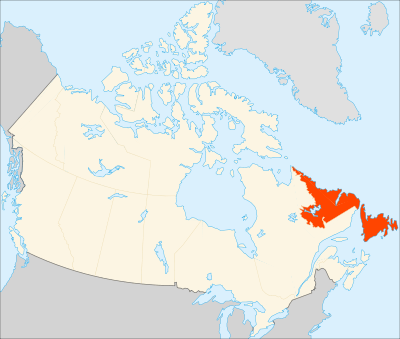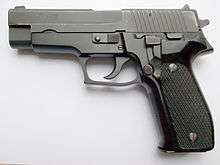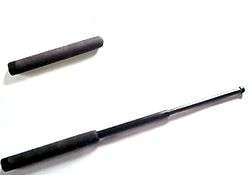Royal Newfoundland Constabulary
| Royal Newfoundland Constabulary | |
|---|---|
 Badge of the RNC | |
 Shoulder flash of the RNC | |
 Shirt and vest patch | |
 RNC flag | |
| Abbreviation | RNC |
| Motto | "Safer Communities Through Policing Excellence" |
| Agency overview | |
| Formed | 1841 |
| Preceding agency |
|
| Employees | 545 (2015) - 420 sworn members and 125 civilian members |
| Annual budget |
Total RNC $60,043,208 Total Current $48,454,517 (2012-2013) |
| Jurisdictional structure | |
| Operations jurisdiction | Newfoundland and Labrador, Canada |
 | |
| Map of Royal Newfoundland Constabulary's jurisdiction. | |
| Population | 526,702 |
| Legal jurisdiction | Provincial |
| Governing body | Her Majesty in Right of Newfoundland |
| Constituting instrument |
|
| Headquarters | 1 Fort Townshend, St. John's |
|
| |
| officers | 420 |
| civilians | 125 |
| Minister responsible |
|
| Agency executive |
|
| Facilities | |
| Office or Detachments | 7 |
| Website | |
| www.rnc.gov.nl.ca | |
The Royal Newfoundland Constabulary (RNC) is the provincial police service for the province of Newfoundland and Labrador. The primary function of the RNC is to enforce provincial laws, the Criminal Code, and provide security details for VIPs and the Premier of Newfoundland. The Royal Newfoundland Constabulary is also responsible for providing metropolitan police services to the northeast Avalon Peninsula (St. John's, Mount Pearl, and Conception Bay South); western Newfoundland (Corner Brook); and western Labrador (Churchill Falls, Labrador City, and Wabush).
History
The RNC dates back to 1729,[2] with the appointment of the first police constables. In the 19th century, the RNC was modelled after the Royal Irish Constabulary (RIC) with the secondment in 1844 of Timothy Mitchell of the Royal Irish Constabulary to be Inspector General, making it the oldest civil police force in North America. Mitchell served as Inspector General and Superintendent of Police until 1871, when the Newfoundland Constabulary was reorganized with a new Police Act.
Other officers recruited from the RIC to take command of the Newfoundland force included Thomas J. Foley, who served from 1871 to 1873, Paul Carty, who headed the RNC from 1873–1895, and John Roche McGowen, who served as constabulary Inspector General from 1895-1908.
In January 1909, John J. Sullivan became the first Newfoundland-born police chief of the RNC. He held that post until September, 1917.[3]
During World War II, the RNC pursued spies and criminal elements in the foreign military stationed at St. John's.[4] Their investigation into the 1942 Knights of Columbus Hostel fire has become popular knowledge.
In 1979, Queen Elizabeth II of Canada conferred the designation Royal on the Newfoundland Constabulary,[5] in recognition of its long history of service to Newfoundland and Labrador.
On May 3, 2005, the RNC made a formal exchange of colours with An Garda Síochána na hÉireann, one of the two successor forces to the old RIC. The exchange of colours was to mark the historic links between policing in Newfoundland and Ireland.
Operations
The Royal Newfoundland Constabulary serves alongside the Royal Canadian Mounted Police, which is contracted by the provincial government to provide provincial and community policing services. The Royal Newfoundland Constabulary services mainly major metropolitan areas while the RCMP serves smaller and remote rural areas.
The RNC polices the following areas:
- St. John's Metropolitan Area (St. John's, Mount Pearl, and surrounding communities)
- Corner Brook
- Labrador West (Labrador City, Wabush, Churchill Falls, and the surrounding area)
Operating stations include:
- St. John's - 3 locations: Headquarters, Patrol Services Division and Criminal Investigation Division
- Mount Pearl - Satellite Office
- Labrador City - Detachment
- Corner Brook - Regional Office
- Churchill Falls - Regional Office
Ranks
| RANK | COMMANDING OFFICERS | SENIOR OFFICERS | POLICE OFFICERS | OFFICER IN TRAINING | ||||
|---|---|---|---|---|---|---|---|---|
| Chief of Police | Deputy Chief | Superintendent | Inspector | Staff Sergeant | Sergeant | Constable | Cadet | |
| INSIGNIA |  |
 |
 |
 |
 |
 |
 |
No Insignia |
Fleet
The Royal Newfoundland Constabulary maintains a fleet of vehicles of models from several major automakers, such as models including but not limited to the following:

| Make/Model | Type | Status | Origin |
|---|---|---|---|
| Chevrolet Impala | General police vehicle | ||
| Chevrolet Tahoe | (marked) General police vehicle, Traffic Services | ||
| Dodge Charger | General police vehicle | ||
| Ram pickup | Parking Enforcement, Document Services Section | ||
| Ford Police Interceptor | Highway Unit, General police vehicle, Traffic Services | ||
| Ford Expedition | (marked) Supervisor Truck, Traffic Services, Special Operations | ||
| GMC Sierra | General police vehicle |
- Other Vehicles are commissioned for special purposes, such as the Tactics and Rescue Unit (TRU), Dog Services, Mounted Unit Transport, and Evidence Collection.
- 29 foot Mercury Rigid Hull Inflatable Boat (RHIB) with twin 200HP engines
Weapons
As a result of the recommendations of the Select Committee on the Arming Policy of the RNC, members on operational duty were permitted to wear sidearms starting 14 June 1998.[6] Previously, members were required to keep all firearms secured in the trunk of the police cruiser and were only deployed with permission from the Chief.
Mounted unit
The RNC has operated a mounted unit since 1873.[7]
The unit was created in 2003 replacing a voluntary unit. The unit's history can be traced back to three earlier units, the Newfoundland Constabulary Mounted Force 1873-1894, New Fire Brigade Mounted Force 1895-1922 and Newfoundland Constabulary 1922-1951.
The unit has four Percheron horses:
- Dr. Rich
- Townshend
- Fraize
- Dobbin
Marine Unit
RNC Marine unit dates back to the 1880s using the steam cruiser Fiona (c. 1887)[9] and now has 8 crew members patrolling the Newfoundland and Labrador coastline with the Canadian Coast Guard with 5 vessels.[10]
The current RNC Marine Unit RHIB is housed at the Rovers Search and Rescue Regional Training and Response Facility
See also
- Custodian helmet
- Integrated Security Unit
- List of Canadian organizations with royal patronage
- Monarchy of Canada
- Royal Canadian Mounted Police
- Royal Irish Constabulary
- Newfoundland Ranger Force—police force that patrolled the country from 1935 until 1949
References
- ↑ Royal Newfoundland Constabulary Act
- ↑ "Royal Newfoundland Constabulary".
- ↑ The Biography of John J. Sullivan.
- ↑ Browne, Gary (2009). To Serve and Protect: The Newfoundland Constabulary on the Home Front World War Two. ISBN 0-9783434-9-2.
- ↑ "List of civilian organizations with the prefix "Royal"". Canadian Heritage. Retrieved 2010-10-13.
- ↑ "Annual Report of the Auditor General 2001" (PDF).
- ↑ http://www.rnc.gov.nl.ca/mounted_unit/history.html
- ↑ http://www.rnc.gov.nl.ca/whatwedo/MountedUnit.html
- ↑ http://www.rnc.gov.nl.ca/whatwedo/MarineUnit.html
- ↑ http://www.rnc.gov.nl.ca/whatwedo/index.html
External links
| Wikimedia Commons has media related to Royal Newfoundland Constabulary. |





